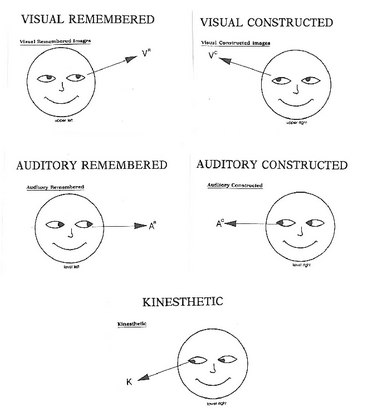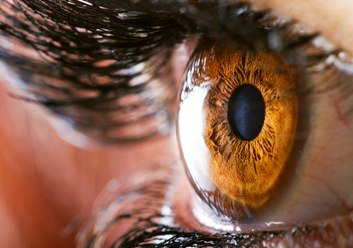Did you know 55 percent of how we experience our world is visual; 38 percent comes from what we hear; and only 7 percent comes from the words we speak.1 (As a writer, that last stat gives me agita.)
So why should we care about this? Because these realities frame how to communicate with others, and they represent a useful code to help us communicate even better. For instance, you meet a prospect by phone. All you have to go on in qualifying this prospect is what you hear and what she says.
When 55 percent of information is lost, you’re at an extreme disadvantage. You can’t see the body language, all those non-verbal cues that help us get a sense of another person. You overcome that disadvantage by fine-tuning your sensitivity to the remaining two modes. This may involve closer listening to precise words or voice inflections or tonal levels. More on this is upcoming posts.
If you can’t read body language, you’re less likely to build rapport. Without rapport, there’s no trust, no sale. People are hardwired to do business with people like themselves. If there’s no sale, nothing happens. In fact, nothing happens in this world until something does sell.
Your ideas. Your talent. Or your product.
When I speak to people who fear selling or despise salespeople, I remind them that they sell every day and don’t know it. Calling to land a doctor’s appointment. Getting the best price at a garage sale. We all try to persuade others to take action in our own interest.
Whether it’s a dinner invitation to a woman you’ve just met or convincing your teenager to go to college, everyone sells in some way every day. You need to know how to influence the process to be a truly good communicator.
Knowing we use our five senses to experience the world, what do you do when one or more aren’t accessible. I’m going to share an NLP (neurolinguistic programming) formula that lays the groundwork for better understanding of how to communication using sight, sound, and touch. Arguably, we don’t use taste and smell in communication between messenger and receiver. But wait. Marketers do. Think scented ads and the power of taste tests.
Social scientists tell us there are three types of people in the world. Fifty-percent are visuals; 25 percent are auditories; and, 25 percent are kinesthetic (those who use all senses to get a “sense” of their surroundings.) It’s not that black and white. Each of us has a sensory preference we use (especially under stress) to process information about our world. It’s called a lead or primary representational system.2
It’s important to learn which way you and others prefer to process information to become an effective communicator.
I know that I am a majority visual with a kinesthetic back-up. I need to see what I’m doing to learn and I need to get a sense of the situation to proceed confidently. How do I know? I had my eyes read!
There’s a fun, foolproof exercise that you help you learn to read other people’s eye movements to determine which category they fit.
 The Visuals
The Visuals
When they’re thinking of a past memory, their eyes go up and to the left. When they’re constructing a present thought or imagining the future; their eyes go up and to the right.
The Auditories
When they’re thinking of a past memory, their eyes stay level and move to the left. When they’re constructing a present thought or imagining the future; their eyes stay level and move to the right.
The Kinesthetics
Past or present doesn’t matter. Kinesthetics gain a sense of things at the moment, and their eyes move to the lower right. For physiological reasons, we are hardwired to do this eye movement dance. It’s automatic and unalterable. As they say, the eyes are the windows to the soul, and they don’t lie.
The next time you are in any situation with another person, especially one you don’t know, maintain consistent eye contact and watch his or her eye movements to determine preference. Then, you can fashion your communication to match. Make your presentation visual for visuals. Make a podcast or a persuasive speech for auditories. Make a highly interactive presentation for kinesthetic, getting them involved with all their senses. This work takes a lot of practice to get good at, but it is so worth it.
And if you don’t know whether you’re a visual, auditory or kinesthetic, share the eye diagrams. While you’re having a natural conversation, ask your friend to read your eyes. You’ll know in about 60 seconds!
If you want a competitive advantage in today’s crowded, noisey, overcommunicated world, take a tip from NLP, let the eyes guide you. It’s as natural as looking at a painting, listening to music or shaking hands. And a lot more fun and authentic than memorizing sales closes.
Something good is about to happen*,
Carolyn
1Dr. Albert Mehabian, “Decoding of Inconsistent Communication,” published paper. 1967, University of California at Los Angeles as cited in Convince Them in 90 Seconds, Nicholas Boothman, 2010
2Brooks, Dr. Michael, The Power of Business Rapport, 1991, Harper Collins
*borrowed from Coach Pete Carroll (before the final play in Super Bowl XLIX)







